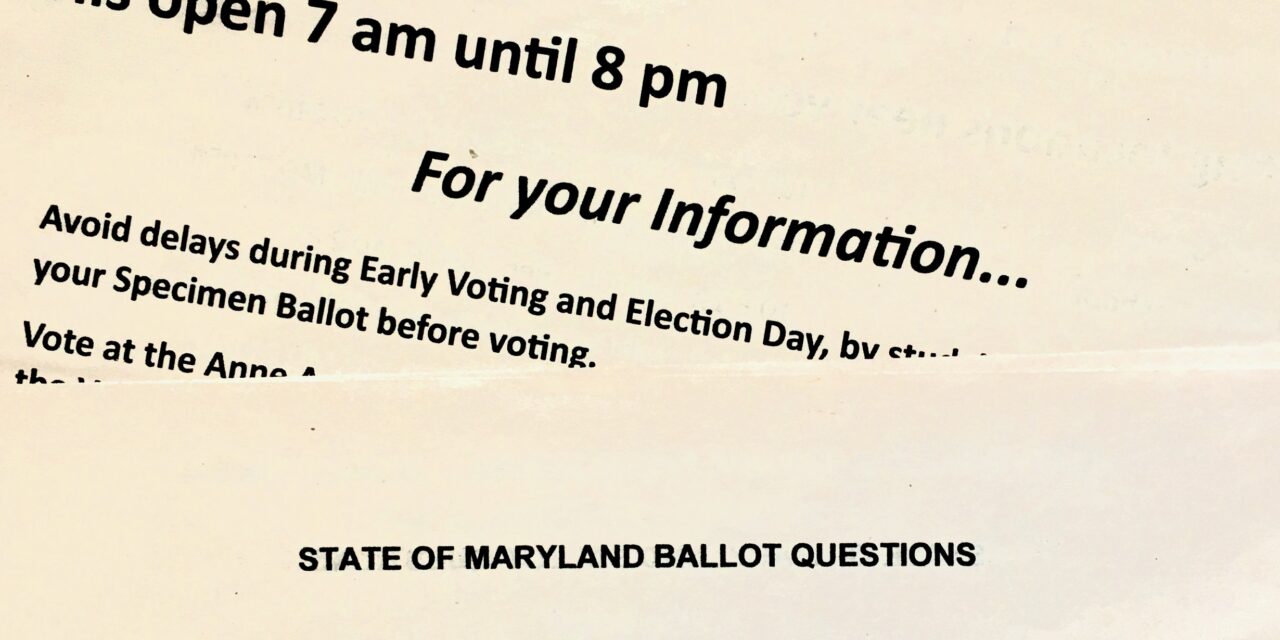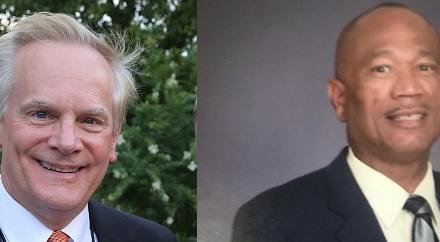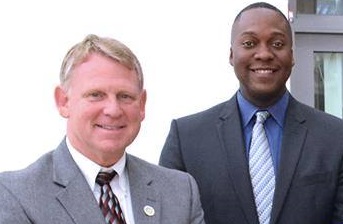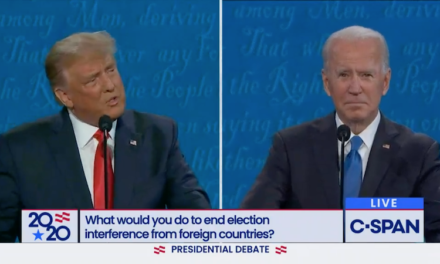By Philip Van Slooten
Capital News Service
ANNAPOLIS, Maryland — Mail-in voting is underway as Marylanders consider a proposed constitutional amendment granting the legislature the ability to increase line-item funding and add items to the state budget.
Legislators advanced the measure in March, largely along party lines, with lead sponsors arguing it seeks to balance the budget process while opponents state it removes a legislative check.
If approved by voters, ballot question 1 would authorize the General Assembly to make changes to the state budget as long as those changes do not cause the budget to exceed the total amount submitted by the governor.
“To my knowledge, there is not another legislature that is limited in its ability to be able to change the budget, other than decrease amounts,” Stella M. Rouse, associate professor and director of the Center for Democracy and Civic Engagement at the University of Maryland emailed Capital News Service on Friday. “This is a bit unique.”
The legislature’s budget authority was limited by a constitutional amendment approved by voters in 1916 in an effort to avoid a financial crisis. A balanced budget amendment in 1974 set further restrictions on Maryland’s “unique” budgetary process.
“Under the current Maryland constitution, unlike every other state legislature in the country,” Sen. James C. Rosapepe, D-Prince George’s and Anne Arundel, told the Senate Budget and Taxation Committee when introducing Senate Bill 1028 on March 4. “We have an extremely limited ability to make decisions about how money is spent in the current year’s budget.”
Currently, Article III, section 52 of the Maryland constitution prevents the state legislature from increasing funding or adding any new appropriations to the governor’s executive budget, but lawmakers can decrease funding.
Over the years, legislators developed budgetary tools, which former Senator P.J. Hogan, an early sponsor of similar budget amendments, told the Senate committee back in March were ineffective. One of these is a process of earmarking money known as “fencing off.”
Another way lawmakers direct spending is to mandate it through legislation passed by the majority-Democrat General Assembly.
“What has not worked is ‘fencing’ as an example,” P.J. Hogan said. “Think about the number of times you have fenced off money and said it can only be spent for ‘this’ and a governor says, ‘I’m not going to release the money for that.’ Or you go the other route for mandating spending and that causes problems because you are trying to predict the future.”
Rosapepe explained to the committee that the bill’s title, “Balancing the State Budget,” referred not only to ensure the state’s finances remain fiscally balanced, “but also balanced between the responsibilities of the governor and the responsibilities of the legislature.”
“One way different groups get a voice in government is through the legislature, through the budget process,” Rosapepe told Capital News Service this week. “Since 1916, the voice of the people does not have a role in allocating money in the budget. It limits the voice of the people in setting priorities in the budget.”
He said one goal of the amendment is to restore to the state legislature the same authority that other legislatures across the country and even city councils across the state have when allocating funds toward constituent priorities and giving them a role and a voice in government.
“This is actually a fairly simple change,” Delegate Marc A. Korman, D-Montgomery, said in an email to the Capital News Service on Monday. “That provides the Maryland legislature a power 49 other states have, and most Marylanders believe we already have, to let the people’s branch of government fund the people’s priorities.”
While Rouse was not willing to go so far as to say the Maryland General Assembly’s current limited budget authority was unprecedented among other states, a detailed assessment of Maryland’s budget process conducted in 2003 by the Department of Legislative Services, using materials prepared by the National Conference of State Legislatures, found “in most states, the governor’s proposal establishes a framework for budget discussion.”
But the study reported in Maryland, Nebraska, and West Virginia the legislature had limited power to increase or decrease budget items. Korman, Rosapepe, and other amendment supporters argue this limits Marylanders’ ability to influence the budget.
However, a Goucher College poll released this week revealed how complex ascertaining the public’s funding priorities could be, as shown in Marylanders’ “mixed” responses to questions on police funding.
“Maryland residents are largely supportive of key police reforms that are currently being discussed by state lawmakers and have dominated our national discourse,” said Mileah Kromer, director of the Sarah T. Hughes Field Politics Center at Goucher College in a statement released with the poll results.
“But there’s a mixed message on police budgets,” she added. “Residents support both increasing funding to hire more or better-trained police officers and reducing police budgets to allocate more money to social programs.”
Republican opponents of the budget amendment say the governor is in the best position to interpret Marylanders’ priorities.
Sen. Bryan W. Simonaire, R-Anne Arundel, who recently assumed the position of Senate Minority Leader, told Capital News Service it was appropriate for the governor to have his current role in the budget process because his responsibilities are to the entire state and not just a district.
“The people of Maryland elect the governor for a statewide office,” he explained. “I’m elected by 1/47th of the population of the state while the governor has to have the perspective of the whole state.”
The Maryland Department of Budget and Management, in an opposition letter submitted on March 4 to the Senate Budget and Taxation Committee, stated the proposed amendment weakens the executive budget system put into place by voters in 1916.
“The rationale for the Executive Budget Amendment,” the statement reads. “Is that the Governor is the official best suited to preparing a comprehensive plan of expenditures because he has daily responsibility for the administration of State government.”
Simonaire added that Marylanders have shown they prefer a divided government through a Republican governor and a Democratic legislative majority. He believed a new budget amendment could offset this power balance.
He also cautioned that if legislators had more power over the budget process they could use it to benefit their districts, particularly larger ones. A few other Republicans agreed.
Back in 2014, the state’s less-populous yet reliably Republican jurisdictions helped propel Hogan into the governorship, while denser jurisdictions such as Montgomery and Prince George’s counties and Baltimore tend to vote more Democratic. These more populous districts have more representation in the General Assembly.
Delegate Kathy Szeliga, R-Harford and Baltimore counties, who is also opposed to the amendment, wrote in an email to her constituents on Oct. 8 that she would vote against expanding “the legislature’s ability to spend tax dollars and increase spending.”
“The current system creates a check and a balance on the legislature’s desire to centralize funding to the urban areas of Maryland,” she stated.
Delegate Susan W. Krebs, R-Carroll, also mentioned the current system as a check on legislative budgetary power in an email to her constituents this week. She stated she would be voting against the amendment as well.
“The current system creates a check and a balance on the legislature and forces compromise with the governor,” she wrote. “And I think that is good for the entire state.”
But other legislators, Democrats, disagreed.
“This is a restoration of our role. This is not us imposing ourselves on any gubernatorial power,” Delegate Gabriel Acevero, D-Montgomery, who sponsored the House version of the bill told the Appropriations Committee on March 18. “This is a restoration of the legislature’s role to ensure Maryland does not continue to be the weakest state legislature in the union as it relates to the budget. And we’re doing it in a democratic fashion by putting it to the people.”
The Maryland Center on Economic Policy wrote in their statement of support that the limits placed on the General Assembly in 1916 were “in response to a problem that no longer exists,” and that the current amendment “offers a better way to share decision-making authority between the branches.”
Henry Bogdan of the Maryland Association of Nonprofits further testified before the committee in March that the public is currently cut out of the budget process because “You, their representatives, have no power to advance any particular thing that needs to be done.”
“It’s much harder for a constituent or community group to get the attention of the governor on a problem than it is for the constituents or community groups in your districts,” Bogdan said. “You all tend to be much more responsive to people, and you should be able to respond to issues where people want to advance causes in the budget.”
Ultimately, as Delegate Maggie McIntosh, D-Baltimore, chair of the Appropriations Committee pointed out on March 18, it is up to the people of Maryland to decide what happens next.
“This bill, if it goes to the ballot,” she told the committee before the measure passed. “Your constituents have just as much power as you do. Equal power. Their vote is just as powerful as yours.”







Recent Comments